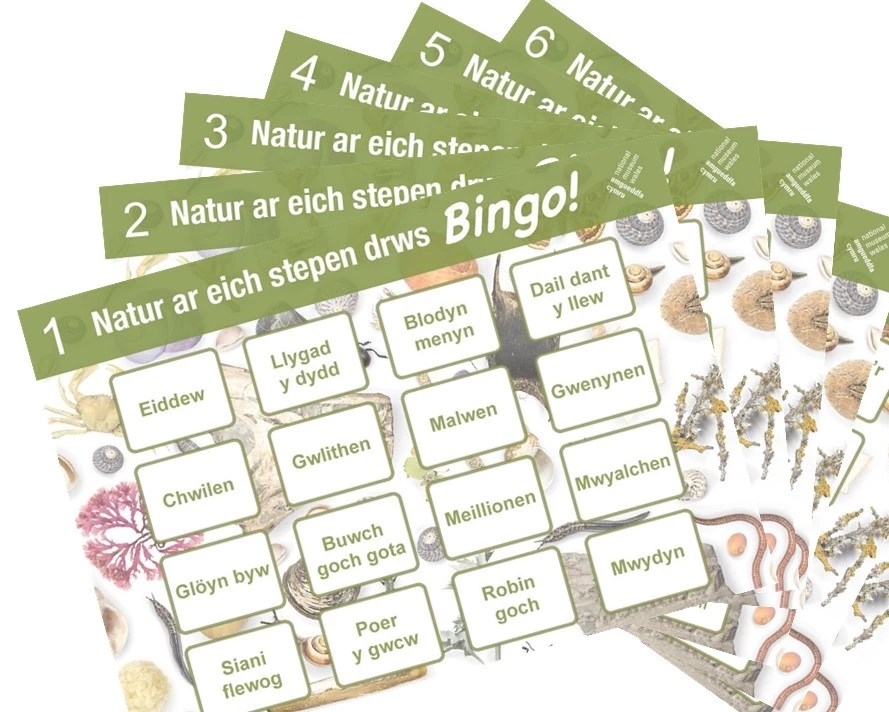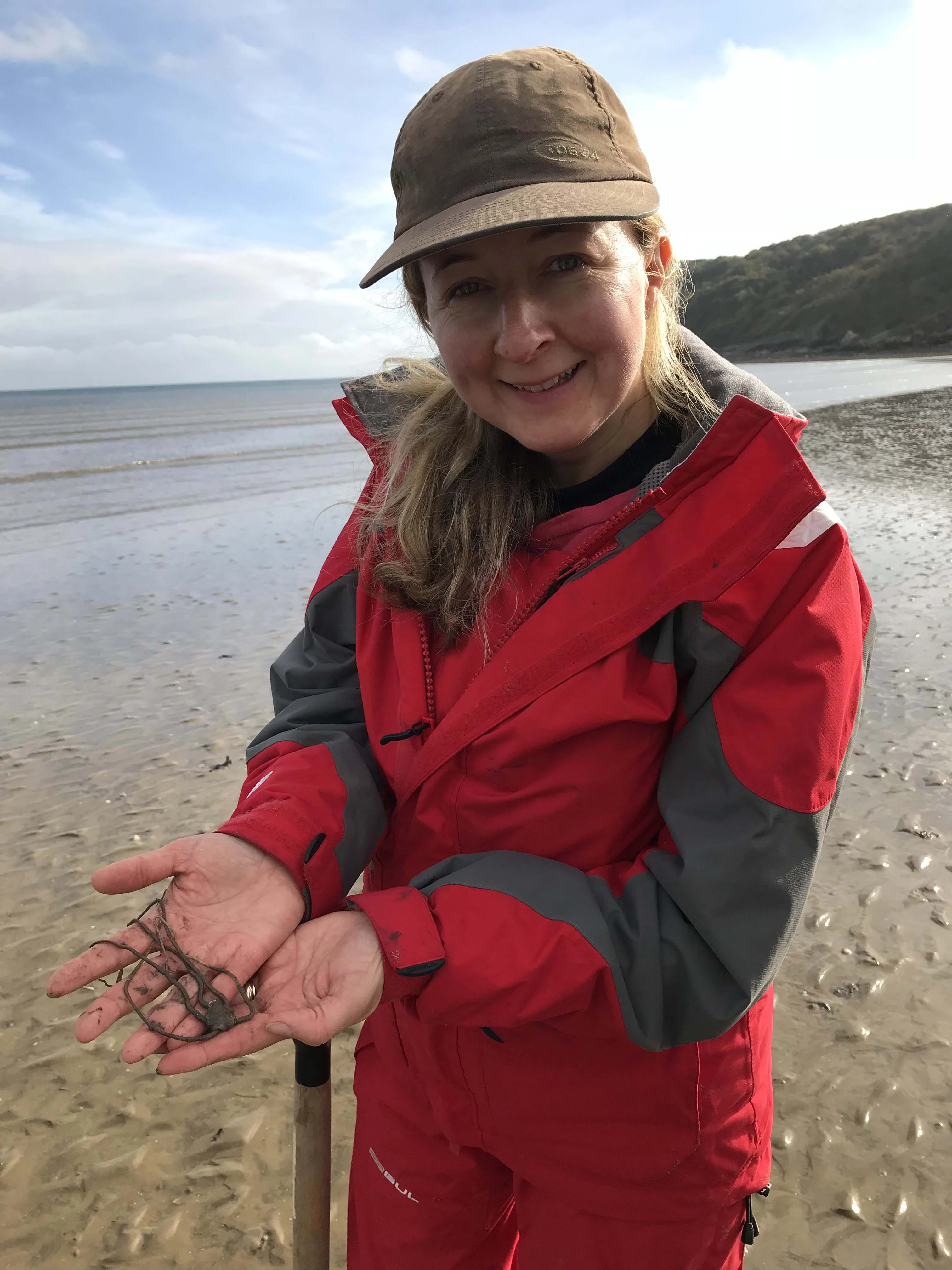New resources for exploring nature and archaeology
, 28 May 2021
Over the past year, we have all had to stay closer to home more often. We may have discovered new local places, and started to look in more detail at familiar places. The museum has launched a new set of web-based resources to help people continue this exploration. The new On Your Doorstep webpages help and encourage others to discover local archaeology and nature in Wales. We’ve included activities for investigating and learning more, in the countryside and urban areas. If you want to delve even deeper, you can explore our natural history and archaeology collections of over 4 million specimens, and find links to our specialist sites.
Visit: On Your Doorstep: Nature, geology and archaeology in Wales
Nature Bingo
Have a go at spotting everything on our nature bingo cards. Cards for spring and summer are available now, as well as cards with more abstract terms such as ‘hooked’, ‘shiny’ and ‘slow’ to challenge you to look more closely at nature when you are out and about. Get out there and start ticking them off! Who can get a full house first? You can improve your Welsh at the same time by using both English and Welsh versions together as well as the handy hints for learners.
Spotter’s Sheets
The spotter’s sheets in Welsh and English are there to help you to recognise more of the natural world and the archaeology on your doorstep. Use our downloadable spotter’s sheets to identify animals, plants, fossils, rocks and artefacts. They can be used as an introduction to a particular theme, to remind you of helpful identification characteristics, or to learn interesting facts about ordinary things around us in Wales.
Guides…to animals and plants
Visit the nature spotters guides webpage.
- Garden Pond Snails. Are there snails in your pond, if so what are they?
- Hitchhikers on Ocean Plastics. Some sea creatures use floating plastic, or other waste, to travel around the world. Get in touch with us if you find any in Wales.
- Brown Seaweeds. Brown seaweeds are often the most obvious living things on a rocky shore. Learn about a few selected seaweeds to get you started on the 120 you can find in Wales!
- Red & Green Seaweeds. When you’re next on a rocky shore, try looking for these red and green seaweeds which are common features of rock pools.
Guides…to geology
Visit the nature spotter's guide webpage.
- Have I Found a Fossil? Use this guide if you are unsure whether the object you have found is a fossil or not.
- The Main Fossil Groups. Working out which group your fossil belongs to will give you an idea of how old it is and tell you something about the habitat where it lived, millions of years ago.
- Penarth Fossils. Search the beach for loose fossils at Penarth and use this guide to work out what you have found.
- Building Stones of National Museum Cardiff. Look at geology in an urban environment, and learn more about the stones used to build National Museum Cardiff.
Guides…to archaeology
Visit the discovering archaeology webpage.
- Recognising Prehistoric stone tools. This guide helps to work out if a stone you’ve found is natural or if it has been shaped by a person in the past.
- Housing in Wales before 1000 BCE. Today’s houses are a recent innovation. Find out what type of houses were common just a few thousand years ago.
- Making axes at the end of the Stone Age. People started making polished stone axes around 4000 BCE and used them to chop down trees, impress neighbours, or beat up enemies. But where do you go to find the right rocks to make an axe in Wales?
Get involved!
You can share archaeological finds with us on Twitter via @SF_Archaeology, and natural history finds via @CardiffCurator.
We currently have a project looking at new animals rafting across seas and oceans to Wales on plastics, so we really want to hear from you. Tell us if there are any other spotter’s sheets you’d like us to make. And if you complete any of our nature bingo cards, feel free to boast on social media by sharing your nature photos with us! To let us know about more sensitive things such as dinosaur footprints or rare plants, or for more help, please get in touch with our Museum Scientists.
Look out for more activities and features appearing on the ‘On Your Doorstep’ webpages through the year and keep an eye out for more archaeology which will launch fully for the 2021 Festival of Archaeology during July.



